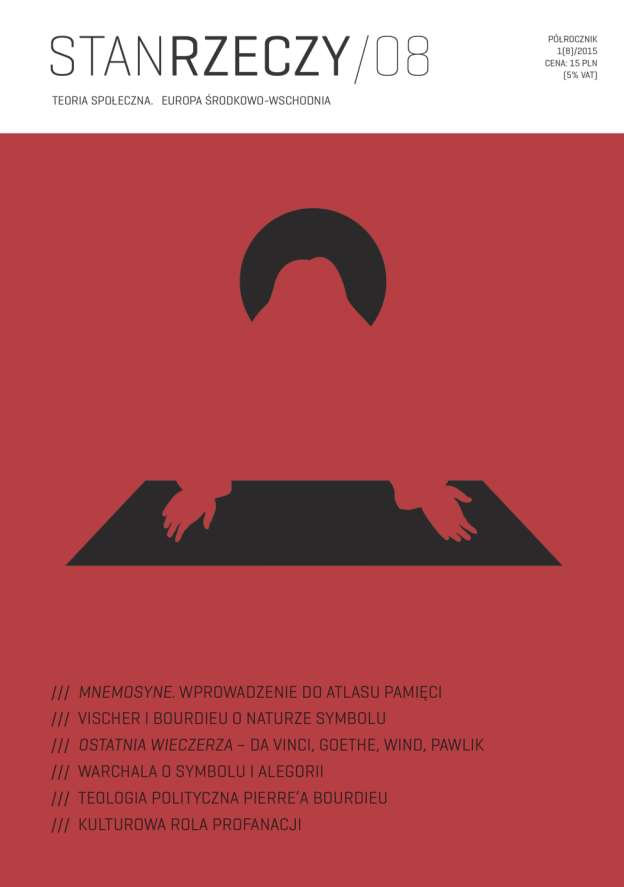
We kindly inform you that, as long as the subject affiliation of our 300.000+ articles is in progress, you might get unsufficient or no results on your third level or second level search. In this case, please broaden your search criteria.

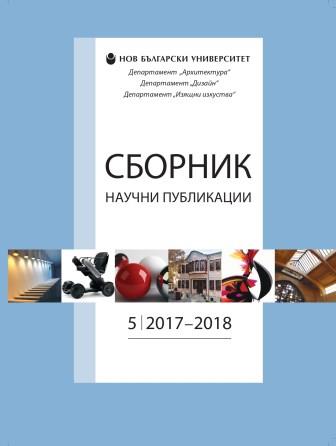
Daylight matters to all of us - on first place for the sense of time and space, but also for our health, good mood, biological rhythm, etc., although we only become aware of this fact when it is lacking. Architects, from the Antiquity to today try to bring daylight in every room they are creating. Even if we have artificial light for the last 100 years - because of electricity and the bulb created by Thomas Edison, we still need every day natural daylight to be healthy – for the specific spectrum of daylight, for the change of color of light through the days and the seasons, and for many other reasons daylight is unique for our health. That’s why It is very important, for architects and designers, to know the impact of daylight when making all kind of buildings and their interiors, because we, architects, are responsible for the health of their inhabitants, and especially when it concerns children – nurseries, schools, or illness - when we design hospitals, or offices and factories - where people will spend most of their lives.
More...
The streets in the historical centers of the cities of Western Europe and the world are of particular interest in the 1960s and 1970s. They set out a number of important principles: (a) preserving the historical substance; (B) increasing public functions and preserving the most valuable architectural and urban features; (C) arrangement of pedestrian zones - PZ; (D) turning PZ into entertainment and trading areas; (E) turning PZ into areas of culture; (E) creating uninterrupted public spaces at the ground level.Modern city space solutions develop further these trends and put the quality of life and its social, economic, political and enviramental aspects of urban spaces in the focus of interest of designers and all urban planners. Political aspects include: (a) planning tools; (B) financial security; (C) communication and (d) monitoring, and social aspects: (a) organizing events, typical places, museums, street artists; (B) creating attractive meeting venues; (C) walking and just hanging out, enjoying the free time; (D) children's entertainment; (E) an environment of social equality. Enviromental aspects include: (a) air quality and hygiene; (B) quality of the urban environment and cleanliness; (C) noise pollution; (D) freedom and enjoyment of movement (public and private transport, pedestrian and bicycle areas). The economic aspects of quality of life include: (a) revitalization of physical and spatial assets (quality, accessibility, efficiency to increase their competitiveness and value); (B) tourism (culture, heritage, shops, entertainment, specific places); (C) entertainment and leisure; (D) work (business, services, commerce, entertainment).
More...
Modern society lives a fast-paced lifestyle. Everyday routine dominates the life of people who are preoccupied with their own problems and worries. Sadly, however, there is a group of people who finds it increasingly more difficult to join this hectic life and get adequately integrated – these are the people with disabilities. The problem has always existed but it has been deliberately avoided or overlooked (Anev, 2016). The difficulties that this group of people encounter have somewhat been ignored and neglected in the hope that there is someone else who cares about them and can adopt some measures which could result in specific solutions to benefit them. Often people with disabilities are adversely affected when it comes to providing opportunities for meaningful participation in the social and cultural system they belong to. This deficit is usually due to the existence of physical or social barriers caused by ignorance, indifference or fear in the other members of the society. It is quite common for the people, who the disabled interact with, to undervalue and neglect their potential to participate in the regular public life. Design can play an essential part in integrating and including these people in the everyday public activities. The role that design can play can be the starting point for improving the situation. The transition from a medical model (which interprets the disability as a personal tragedy) to a social model which focuses on the disability as a socially constructed concept surrounded by the barriers erected in the surrounding environment is an important step in the attempts made towards understanding the problems that people with disabilities have (Boys, 2014).
More...
In the course of time people have constantly been developing and improving their achievements by adding new functional potential in other spheres of their application. Thus, new products which suit new needs appear. People have always strived to have close connection with their natural environment. Many choose to relax in the countryside – it is the best place for them to escape from the pressure and to charge emotionally for the life they have in their urbanized surroundings. They spend their holidays either in camping sites or alone in the open, thus replacing the conventionalities of the hotel stay. The most wide-spread practice when they make their choice is to use tents, which they transport in their cars or public transport. Since the beginning of the XX century automobile industry has offered an alternative – means of transport which provides the possibility for people to travel at any time they choose, as well as more comfort and protection than tents provide.These means of transport are divided in two main groups in terms of the way they function – vehicles with an engine, and vehicles which are attached to another vehicle. In Bulgaria these two types are known under their terms – the vehicles with engine are defined as tourist vans and campers; while the attached ones – as caravans. This article puts the focus on campers and tourist vans and their potential to provide different uses – from transportation to dwelling. In the English speaking countries campers are familiar under the term “motorhome”, which can approximately be translated in Bulgarian as “autohouse”, “autohome” or “motorhome”. It is an accepted practice to use the abbreviation RV /recreational vehicle/
More...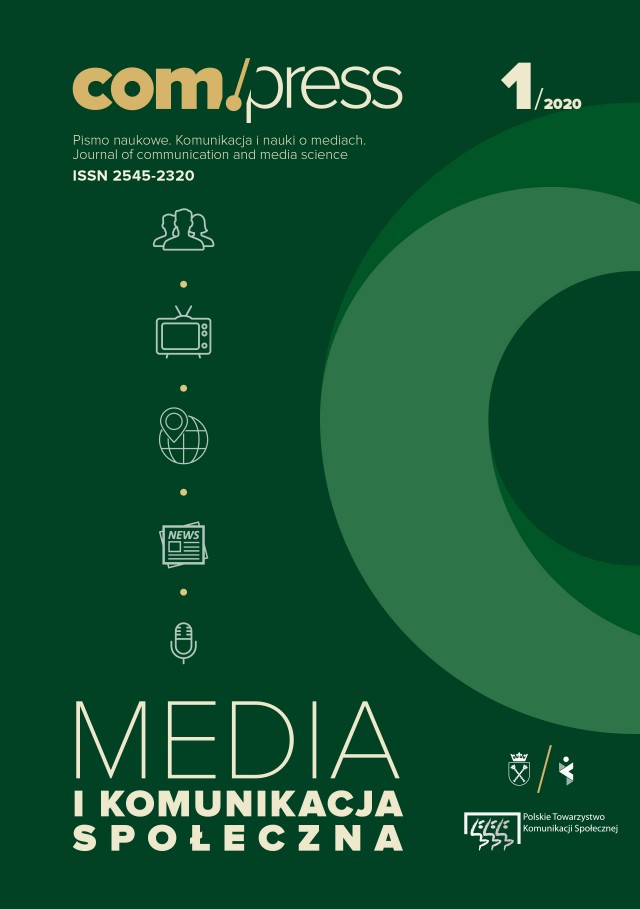
The current development of technology education introduced in the digital world, where teachers are “digital immigrants” and “digital natives” generation of students. Teachers, in order not to become a "digital Amish" for the young generation, should broaden their competences in the field of technological approach to the process of education and upbringing. The article contains a description of an experimental study which aimed to check the application of strategy of advance learning in music lessons. Sixty fifth grade students took part in the experiment. Students had to use modern communication technologies to prepare and record a radio program about classical music by composers from different ages.Keywords
More...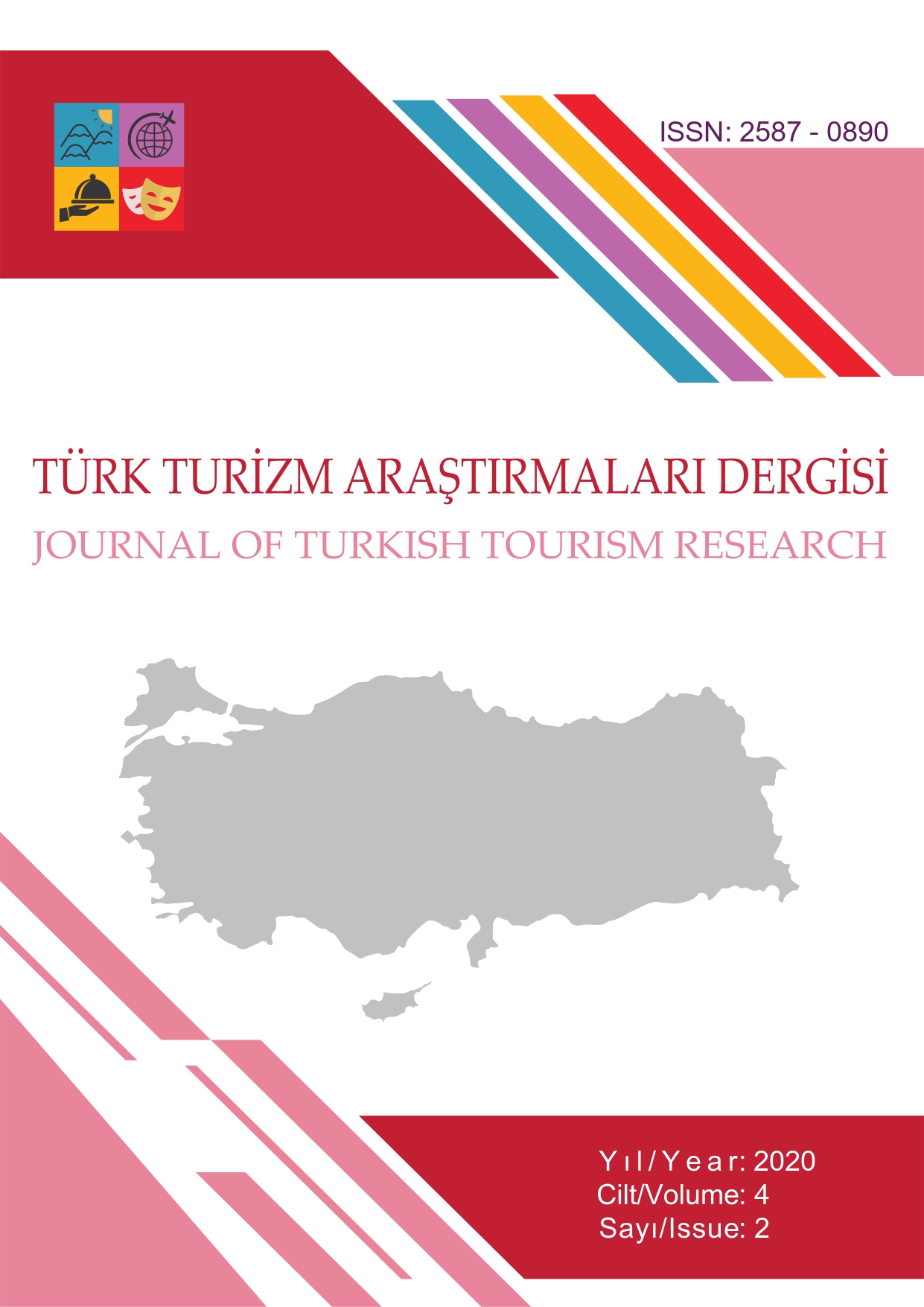
One of the areas that today's technology reveals and reshapes the way of doing business is online distribution channels. Online distribution is effectively used in the distribution of concrete and virtual products. In this sense, one of the products suitable for online distribution is the event tickets made for recreation activities over the internet. Biletix, which acts as an intermediary between the event organizations and the event participant, realizes the sale of the tickets necessary for informing the target audience about the different events and participating in the event. In this research, it is aimed to determine the complaints behavior and complaints of the users of Biletix.com and to contribute to the complaint management process for Biletix. The data consists of complaints under Biletix on January 2017-March 2018 on the website of Sikayetvar.com. The content analysis method was used to evaluate the complaints. As a result of the analysis is that complaints; service, price, website, customer service, space, information, distribution and promotion-promotion are the main themes.
More...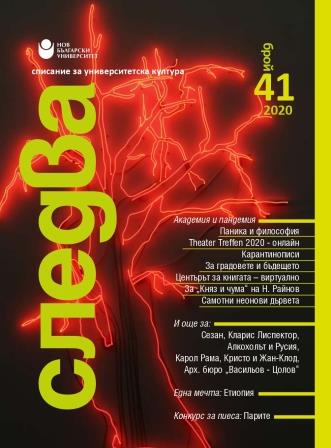
A young man – The Writer – has passed on and has turned up on the shore of the riverStyx, without having anything to pay with to The Ferryman. The Ferryman agrees to lethim travel the dreams of those, who call for him, who miss him, so he could convincethem to bring him a coin. Wandering between the dreams of The Prostitute (whom hepaid with stories, as he had no money) and The Publisher (who is to publish The Writer’sfirst book) and helping his only friend (The Tramp) to pass on as well, stuck betweenthis world and the one beyond, The Writer is forced to revise his whole life, his attitudetowards money, love and his art, so he could meet his Admirer at the end. But is TheWriter worthy of admiration at all? And what were his relationships – were they notbased entirely on money, or was there anything else?
More...
Svetlana is a theatre collage of soulscapes of a few women born in Bulgaria, Russia andthe USA before the fall of the Berlin Wall. Memories from the past alternate with letters,fantasies, and conflicts. The story of Svetlana Alliluyeva, Stalin’s daughter, is in the centerof the play. Parallel to it is the story of Ada, born in the 1970s Bulgaria. Mainly in theform of monologues, the two women speak on the topic of money, truth, family, and theimprint of history on every person’s life.
More...
A drama that began in 1990 when Annie was born. Already on the first night after herbirth, dreams that took on the images of three men visit her. They predict that she is theone who will reveal the family secrets and their souls will be comforted because the deadare said „either good or nothing but the truth”. Time is an ally with the dreams. Eventsfollow, but the time changes the years impartially. Ten years later, Annie’s grandmotherand father die in a disaster. She, her mother and her brother also end up in the hospital.
More...
The characters of the play are students in 1st, 3rd and 5th grade who are friendsfrom school and neighborhood. They are from different socio-economic backgroundsdepending on their parents’ work and social status. They share their problems,disappointments, dreams. The culmination of the play is their escape from schooland going to the scating rink. On top of this forbidden act they lost a large amountof money that they have to give back (without telling the adults because they will bepunished). Thus, the characters experience different trials, revealing their feelings,helping each other, demonstrating friendship, love, determination, as well as envy,bluster, rudeness. Each act of the play develops a separate financial theme, thecomplex issues are presented in a funny, playful way.
More...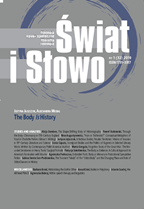
Tupac Shakur’s holographic persona at the Coachella Valley Music and Arts Festival in Indio, California is a point of departure for discussing the Black utopian and dystopian imagery in a future world through technological innovation. In conversation with hip hop studies and critical race theory, Afrofuturism is used as an aesthetic and humanistic methodology to interpret the manner in which Tupac’s posthumous representation complicates ethical, cultural, and theological debates about idealistic and undesirable depictions of Black virtual reality. Understanding Tupac’s routine through an Afrofuture perspective presents a model for assessing perceptions of virtual Black life in the context of a range of social issues, including the perspectives of alternative Black religious futures, resistance of Black artists to White appropriation and altering of Black dead people for the purposes of profit-making. Tupac’s performance underscores the need for broader dialogue, not only on the racial implications of post-human mediations in public space, but also the ideological challenges that Black scholars of future studies face due to larger cultural concerns, especially those of the White hegemony in a hyper-commodified digital age.
More...
To call Laurie Anderson a multimedia artist – as she herself has done on more than one occasion – is to state something so obvious as to be nearly meaningless. Indeed, it is as redundant as to say that her work has persistently concerned the future. Offering universalizing depictions of American postmodernity through the new technologies that were the theme of many of her projects, Anderson has, nevertheless, persistently stressed her attachment to a very traditional art form, that of storytelling. Paradoxically, however, this ancient form implies an interest in the future just as intense as and perhaps in fact even more fundamental than her cutting-edge interactive installations and multimedia performances. Voicing her concern about whether there is indeed any future before humanity, Anderson presented herself in a recent interview as an artist in danger of being radically deprived of her medium, which for a storyteller is, by definition, the future. My paper is a look at the various facets of futures conceptualized by Laurie Anderson over the forty years of her artistic activity, stretching from political fear and anger, through philosophical reflection, to personal considerations of our individual temporality.
More...
The paper is an attempt to investigate the intriguing convergence of the inner logic of three aesthetic categories that emerge from the experience of finitude of existence in diverse cultural environments: the awareness of the tragic in Western cultures, the Japanese category of mono no aware, expressing the painful beauty of things in their impermanence, and a famous Greco-Roman notion of lacrimae rerum (tears of things). All three – despite the deep disparities between the cultural traditions they represent – prove to be the “places” of paradox, of powerful synchronic tension resulting from the “clash” of contradictory forces, transforming one’s perception of the universum. It seems that it is the paradoxical nature of the experiences labelled by these categories (as confirmed by neuroscience) that allows us to confront our finitude with the aid of aesthetic tools.
More...
The article analyses photographic discourse in contemporary Russian dramatic texts as a specific way of perceiving and constructing the reality, as a means of communication, and as a metalanguage. The conceptualization of photographic images in the dramatic text enabled the scrutiny of specific artistic ploys and photographic techniques applied. The article reveals the nature of correlation between the visual perception of a photograph incorporated in the dramatic text, the characters’ utterances and the author’s remarks. The photographic image fosters the rejection or the “appropriation” (recognition in oneself) of the Other by the characters. It also allows for the implementation of the communicative mechanisms used to create the hyperreality of the photo universum. The performative potential of the photographic discourse of the dramatic text materializes itself in such a hyperreality.
More...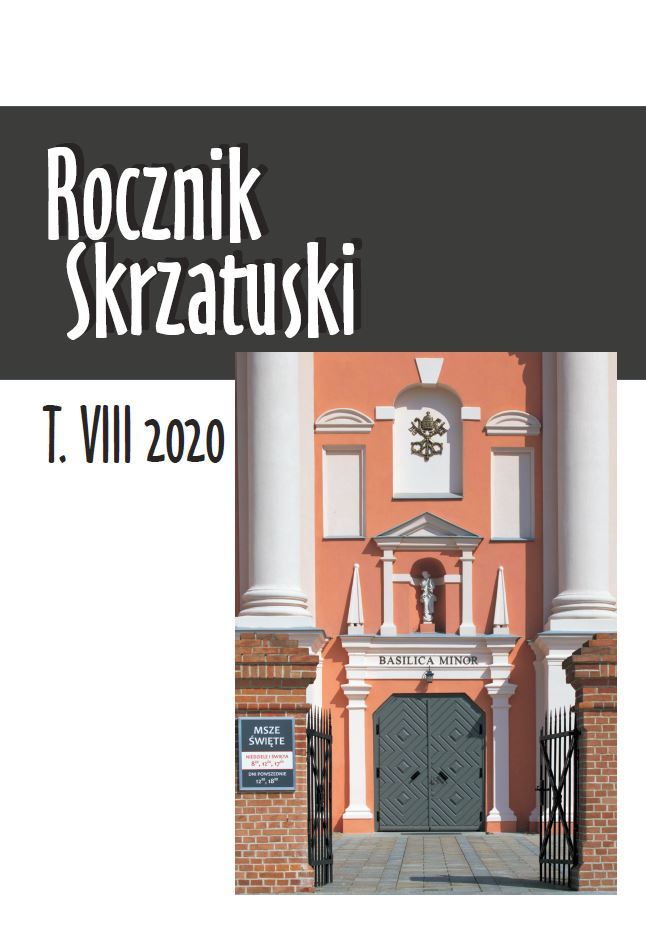
Writing about the cathedral Church requires combining reliable historical and conservation knowledge with the spiritual tradition of Christianity. Restoration works in the Koszalin cathedral, which have been ongoing for many years, also provide for the installation correction of stained glass windows in the Episcopal chancel of the Episcopal temple, make conversation about the presence, history and significance of these over a century-old elements of artistic and liturgical decor. The article gathers basic information related to the origin of stained glass and reflects on the historical and current context of stained glass, and also gave some suggestions for the iconographic program of the cathedral’s presbytery.
More...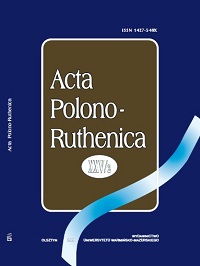
Animated children’s films produced in the Soviet Union from the 1930s to the 1970s contain references to Polish music. They usually take the form of references to the polonaise, less often – to the repertoire of popular music. Recalling Polish dances by Soviet composers indicates, among others, the continuation of the tradition of using the polonaise as a court and ceremonial dance existing in Russia since the 18th century. The conclusions presented in the article were obtained through the audit analysis of soundtracks of seven selected films and their visual-narrative layer. Examples of Polish musical inspirations are discussed, taking into account the sound context of a given soundtrack as a whole. Polonaise inspirations are present in the movies with the music of: N. Bogoslóvskij (Kot v sapogah, 1938; Tri mušketera, 1938), M. Weinberg (Polkan i Šavka, 1949; Dvenadcatʹ mesâcev), B. Savélʹev (Mestʹ kota Leopolʹda, 1975). In the film Skazka skazok (1979, music by M. Meeróvič), tango The Last Sunday of J. Petersburski is cited., in episode 4 (1971) of the series Nu, pogodi! – Brass Bands from the repertoire of H. Kunicka.
More...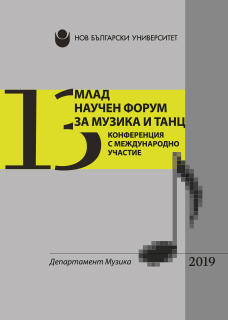
The paper analyses haw the age of the hero in the drama and theater in the communism era functions as a central concept of ideology. The text show how it determines the heros image on the stage, and how it reflects on the actors play, stage-language and the pathetic-monumental aesthetics of the performance.
More...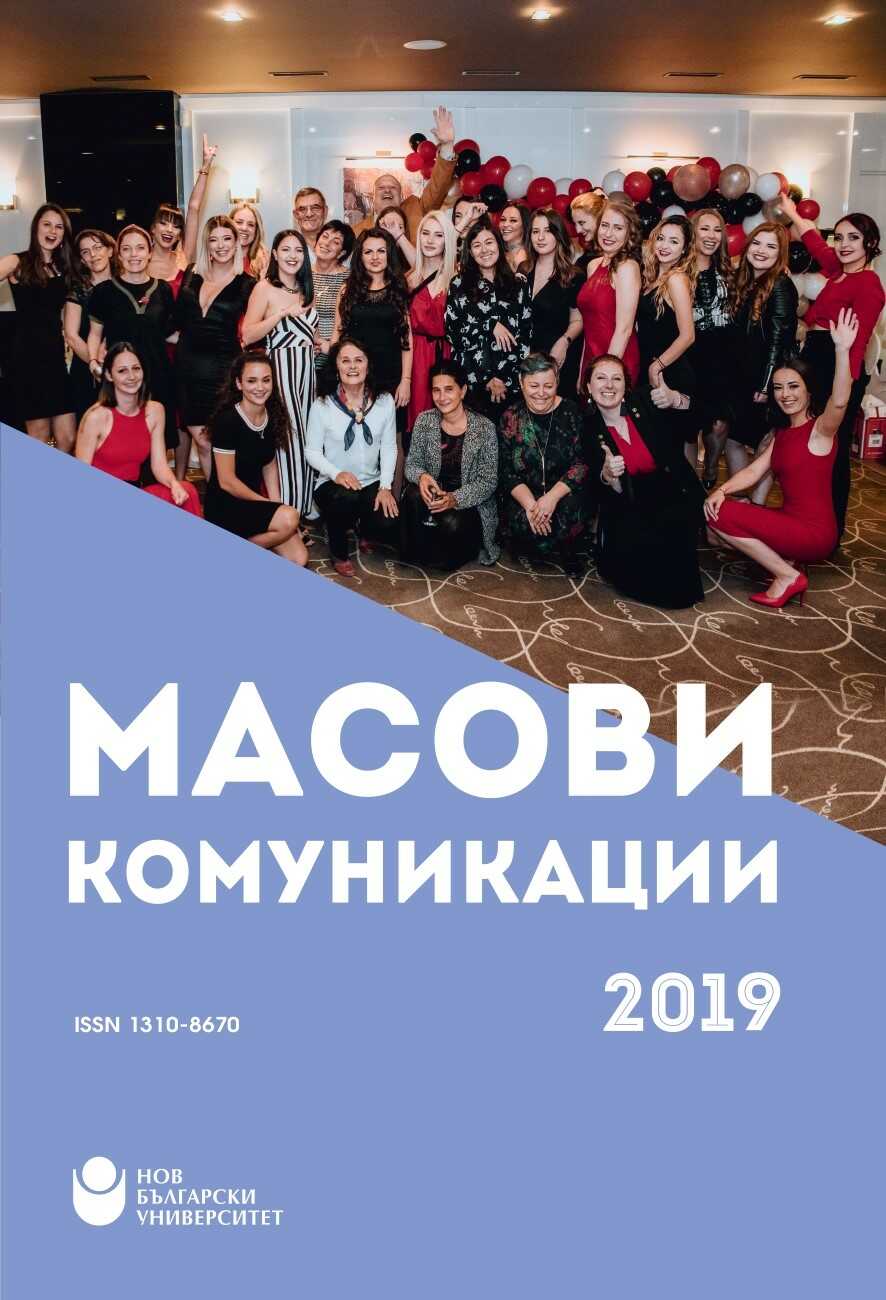
What has been achieved in the first two decades of 21st century in Russian cinema? How many films have been produced, what are the profits from them, how are they distributed? Who are the new stars? Which films are becoming the favorites of the audience and which are receiving worldwide recognition at festivals? We can develop some conclusions thanks to the research and statistics of Kinopoisk.ru (Russia's largest cinema database) and Yandex.ru. at the 2001-2016 period.
More...
The article discusses the rapidly evolving capabilities and growing presence of Artificial Intelligence (AI) based systems through which synthetic media content is created. Although many organizations use the ability to generate synthetic media content for legitimate use, at the same time, there has been an increase in published manipulative and misleading media content intended for fraud, extortion or other unethical purposes. Artificially created content is useful, on the one hand, for projects in which it is used for voice recovery or missing information, and on the other hand it is dangerous when it is used to replace objective reality or to spread disinformation.
More...